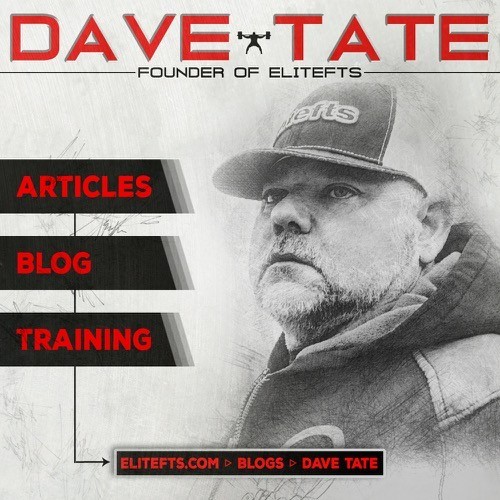
Regardless of whether you train using Block Methods, Western Linear Methods, Undulating, Concurrent, or any another type of training method, supplemental movements are usually involved. I’d go so far as to say that even those who don’t program supplemental movements per se still train the main lifts in a supplemental way. Even if all a lifter does to develop their squat are squats, rarely will they just work up to their work sets and then call it a day. They’ll typically do a few variations of the movement such as walkouts, pause squats, or using a few different stances. Point being, in one way or another, supplemental and accessory work is a part of all training.
Let’s get our terminology in check. Powerlifting is judged solely by your performance in the squat, deadlift, and bench press. These are your main lifts, your main objective, and your sport. It’s not unlike how a track athlete is judged by his or her time or distance in their respective event. So with the squat, deadlift, and bench press at the top of the food chain, the supplemental and accessory lifts are intended to increase those lifts, or what we’ll call the “Strength of the Sport Skill.” With that in mind, there are two schools of thought:
1. Train the main lift to develop the main lift. “To get a bigger squat, you gotta squat. To get a bigger deadlift, you gotta pull. To get a better bench press, you gotta bench.” The big lifts are the focus and appear throughout the training cycle. What changes is the volume and intensity.
2. Find the weak point in the lift and strengthen it. This in turn will strengthen the big lift. The main lift may not even a part of the routine, but improving it is always the objective.
Both approaches are right. However, even those who live by #1 still do other exercises -- they just keep their focus on the big lift. And guys who follow approach #2 still do the main lifts too.
NOTE: Both methods agree that the technical aspects of the competitive lifts must be trained, even those who fall more in line with #2. Fact is, many times the lifts and techniques used to address weak points are being used to correct technique as much as they are used to develop strength.
Most periodization models only target the main lifts. The supplemental and accessory training gets a throwaway recommendation like “3 x 10-15” or nothing at all. I’ve seen coaches and lifters spend hours creating elaborate schemes to train and cycle the competitive lifts and put almost no thought into the supplemental and accessory movements.
From what I see, these movements are being selected based on what they see their favorite lifter doing. These movements work much the same as business fads. Years back it was the close-grip bench press and stiff-leg deadlift. Then the JM press and good morning came in vogue. Today the dead press and front squat are the rage.Needless to say, it would be much more effective to make choices based on your own training, strengths, and weaknesses. To make this process easier to follow, let’s step back and move forward at the same time.
Here’s a template explaining how I define and organize it all myself:
The Lifting Template
Competitive Lifts: Squat, Bench Press, Deadlift
Goal: To increase Competitive Max (CM)
Main Lifts: These can be known as the builders, core lifts, basic lifts, etc. These are the lifts the entire program is built around. For most programs, it will be the squat, bench press, and deadlift. In other programs, special exercises in the form of max effort movements may be used.
Finally, for those who aren’t competitive lifters, these lifts can be anything the lifter or coach feels has the highest dynamic correspondence (carryover) to the sport in question. To illustrate the last example, if I was working with a coach on how to better his/her own training philosophy, I’d first ask what 3-5 movements they feel carry over the most to the sport they’re working with. Whatever their answer is would replace the squat, bench, and deadlift as the competitive lifts.
Supplemental Lifts: These are movements we feel or know will make the main lifts either stronger or better from a technical standpoint. There may be 1-2 of these per session.
Accessories: These are the lifts that will support, balance, and help build the supplemental lifts.
Rehab/ Prehab: While I can’t stand this term it’s what most will understand. These are those things we need to do to stay healthy, recover well, and keep our conditioning in line with the goals of the program.
Sample Session #1
MAIN LIFT: Floor Press – work up to 1 and 3 rep max. Goal: 4 total reps over 90% spread over 2-3 sets
SUPPLEMENTAL: JM floor press with chains – work up to 60% of my perceived max (pm) for the JM press on the floor (what I think I could’ve done for one rep). At this point start adding one chain per side for triples until I could no longer do 3 reps.
ACCESSORY: Hammer curls – 3 sets x 10 reps, Face Pulls – 3 sets x 10 reps
Rehab/ Prehab: Upper body sled work for shoulders (no eccentric) – 4 trips x 20 reps
Keep in mind I trained using a concurrent method so here’s another example using a different method (linear periodization).
Sample Session #2
MAIN LIFT: Squats – work up to 80% for 2 sets x 3 reps
SUPPLEMENTAL: Front Squats – 4-5 sets x 3-5 reps
ACCESSORY: Weighted Back Raises – 3 sets x 10 reps
Rehab/ Prehab: Forward and backward sled drags – 2 trips each.












